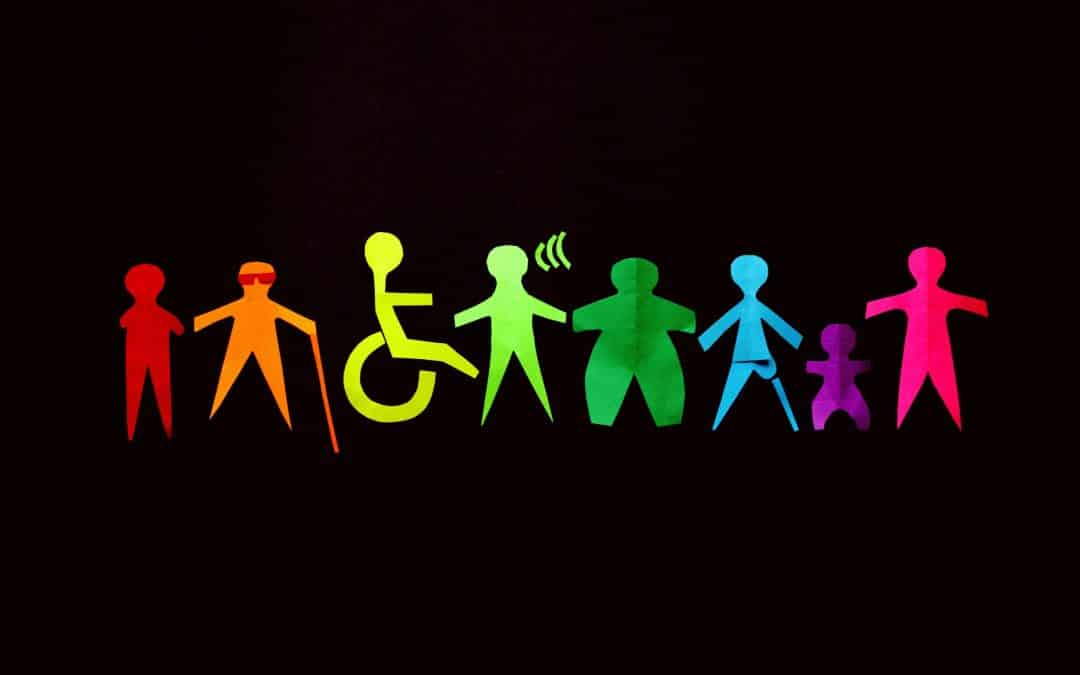As we approach 2025, inclusivity is no longer just a buzzword—it’s a necessity. For celebrants, inclusivity means ensuring that all clients feel seen, respected, and celebrated. Are you an inclusive celebrant business? Are you aware you could do better? Then this post is for you!
While the journey to becoming fully inclusive can seem daunting, taking small, intentional steps over the course of a year can lead to significant progress. This blog outlines a month-by-month plan to help your celebrant business become more inclusive by the end of 2025.
January: Reflect on Your Current Practices
Start the year by taking stock of where you currently stand. Conduct a self-audit of your business practices, marketing materials, and client interactions. Identify areas where you may be unintentionally excluding certain groups and set baseline goals for improvement. Take a look at my blog on carrying out an audit on your business here.
- Action: Conduct an inclusivity audit and set measurable goals.
February: Update Your Language
Language matters. Review your website, contracts, and marketing materials to ensure they use inclusive language that reflects the diversity of your clients. Do you come across as an inclusive celebrant business? Avoid gendered terms and be mindful of language that may unintentionally exclude people with.
- Action: Revise all written materials to use inclusive, non-binary language.
March: Educate Yourself on Cultural Competency

Understanding the cultural backgrounds and practices of different communities is key to providing personalised and respectful services. Spend this month learning about cultural competency and consider attending a workshop or reading up on various cultural traditions.
- Action: Attend a cultural competency workshop and watch this training video I delivered on Cultural Appreciation vs Cultural Appropriation
April: Diversify Your Marketing Materials
Ensure that the images and stories you share in your marketing represent a diverse range of people. Include photos of couples and individuals from different racial backgrounds, body sizes, abilities, and genders to show that you are an inclusive celebrant business.
- Action: Update your website and social media with diverse imagery.
May: Make Your Services Accessible
Consider the physical and sensory needs of clients with disabilities. Evaluate the accessibility of your website, ceremony venues, and the services you offer. Think about how you can accommodate clients with hearing impairments, mobility challenges, or neurodiverse needs.
- Action: Implement at least one accessibility improvement in your services.
June: Foster LGBTQ+ Inclusivity

June is Pride Month, making it the perfect time to focus on LGBTQ+ inclusivity. Ensure that your business is a safe and welcoming space for LGBTQ+ individuals by being mindful of pronouns, offering gender-neutral options, and supporting same-sex couples openly.
- Action: Introduce gender-neutral options in your service offerings and marketing.
July: Partner with Diverse Vendors
Look at the vendors you partner with and consider diversifying your network. By supporting vendors from different backgrounds—whether that’s caterers, photographers, or florists—you can help promote inclusivity within the entire event industry.
- Action: Add at least two new vendors from underrepresented groups to your preferred list.
August: Address Body Positivity
Body positivity is an important aspect of inclusivity. Ensure that your services are welcoming to people of all sizes by avoiding body-related assumptions and language. Consider working with body-positive vendors.
- Action: Partner with body-positive vendors and update your offerings to be size-inclusive.
September: Provide Training for Staff
Inclusivity is a team effort. If you work with other celebrants or have staff, provide them with training on inclusivity and cultural competency. This ensures that everyone representing your business is aligned with your goals. And if it’s just you, then offer to run a session sharing the best practices you’ve put in place over the year so far, for colleagues in your trade association or support group.
- Action: Organize an inclusivity training session for your team/colleagues.
October: Celebrate Inclusivity

As you approach the end of your year-long journey, take the time to celebrate how far you’ve come. Share your progress with your clients and community and invite feedback on what more you can do to be inclusive.
- Action: Host an event or write a blog post to celebrate your inclusivity efforts and gather feedback.
November: Prepare for the Future
Look ahead to the coming year. Review the progress you’ve made, identify any gaps, and plan for continuous improvement. Set new inclusivity goals for 2026 based on what you’ve learned.
- Action: Conduct a year-end review and set goals for the next year.
December: Give Back
End the year by giving back to communities that are often marginalised. Whether it’s through donations, volunteering, or offering discounted services to underserved groups, make a commitment to support inclusivity beyond your business.
- Action: Partner with a charitable organisation that supports marginalsed communities.
Inclusivity isn’t a destination—it’s an ongoing journey. By taking these small, deliberate steps each month, you can transform your celebrant business into one that truly embraces and celebrates diversity. By setting yourself just one action to complete each month you are more likely to succeed in your goal to become known as an inclusive Celebrant by the end of next year. I’d love to hear about your progress.
If you’re looking for help to grow your celebrant business, why not book a FREE 20 minute trial coaching session with me. Let’s talk.

